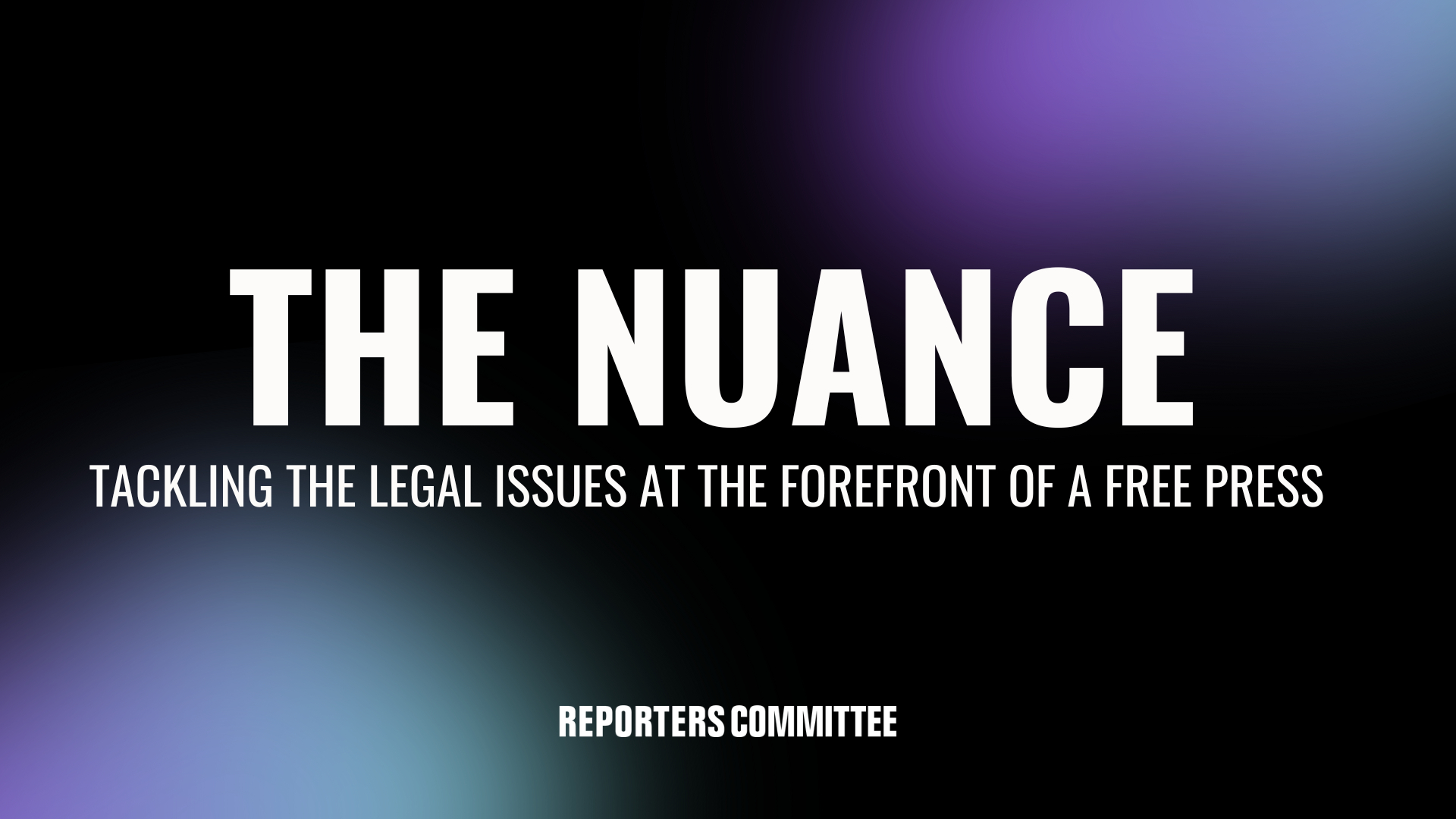Montana’s TikTok ban poses significant First Amendment problems

In May, the state of Montana did something that surely upset teens all over the state: It banned TikTok. Citing the platform’s ownership by a Chinese company, the Montana Legislature passed a bill outlawing the app, the governor signed it, and it is slated to go into effect on Jan. 1, 2024.
But the law is currently being challenged in a now-consolidated lawsuit. The case highlights the thorny civil liberties concerns raised by a statewide prohibition on a social media platform. TikTok and a group of content creators challenging the ban point out in legal filings that states cannot make foreign policy of their own, and note the special danger posed when states try to elbow into a role reserved exclusively to the federal government. The Reporters Committee and the Media Law Resource Center filed a friend-of-the-court brief in the consolidated case, focusing on the importance of TikTok to modern journalists and on two ways the ban violates the First Amendment.
Journalists, like all of us, are increasingly reliant on social media as a method of getting in touch with people, spreading and accessing information, and tracking real-time updates about events in the news. As TikTok has risen in popularity, journalists have flocked to the platform in part because it helps them reach a different audience than on other platforms. They can also report on that audience and use TikTok’s unique features (stiching and dueting, for instance) to do so.
And, as foreshadowed above, this is not just a normative problem. It is also a legal one. The U.S. Supreme Court has held that regulations that single out certain entities within a medium pose severe dangers to First Amendment interests. This means, for instance, that the government cannot tax a certain subset of newspapers differently than other newspapers. In the social media context, it means that the government cannot single out TikTok in particular in the way Montana has done here.
The Montana TikTok ban violates the First Amendment in another way, too, because it forecloses an entire mode of communication. In invalidating an ordinance prohibiting most residential signs, the Supreme Court made clear that these sorts of platform bans violate the First Amendment when they fail to leave open “ample alternative channels” by which the same message can reach the same audience with the same communicative impact. Just as drawing and sculpture are no substitute for painting, neither Instagram nor Twitter is a substitute for TikTok.
It’s easy to dismiss this as a politically motivated ban of a platform (one that has had its own run-ins with press freedom) that mostly hosts dance videos for teenagers. But the principle here transcends the platform affected.
First, TikTok as a forum hosts all sorts of content that is inaccessible elsewhere and it works much differently than other social media. And second, denying journalists access to the app, where information spreads quickly and widely, would, for instance, make it much more difficult for journalists to debunk misinformation about content on the platform spread by, say, members of Congress or the “Today Show.” The Montana Legislature itself relied on the suggestion that “TikTok fails to remove, and may even promote, dangerous content that directs minors to engage in dangerous activities,” citing a long list of social media trends and challenges, many of which did not originate on TikTok, are freely available on other social media sites, and may not represent bona fide trends at all.
For the sake of maintaining democracy, a free press, and a generation of teens with a sated appetite for some of the more outlandish videos on the internet, we hope the court agrees with us and strikes down this ban as unlawful.
Like what you’ve read? Sign up to get The Nuance newsletter delivered straight to your inbox!
The Technology and Press Freedom Project at the Reporters Committee for Freedom of the Press uses integrated advocacy — combining the law, policy analysis, and public education — to defend and promote press rights on issues at the intersection of technology and press freedom, such as reporter-source confidentiality protections, electronic surveillance law and policy, and content regulation online and in other media. TPFP is directed by Reporters Committee attorney Gabe Rottman. He works with RCFP Staff Attorney Grayson Clary and Technology and Press Freedom Project Fellow Emily Hockett.